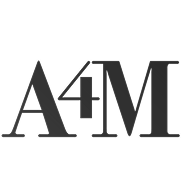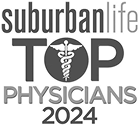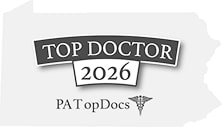Musculoskeletal Pain Treatment
Musculoskeletal pain can affect muscles, joints, tendons, and ligaments—often resulting from injury, overuse, or systemic inflammation. At Meeting Point Health, we take a comprehensive, root-cause approach to healing, combining regenerative injections, osteopathic manipulation, and functional medicine to restore balance and mobility. Our goal is not just to relieve pain, but to rebuild strength and support your body’s natural ability to heal itself.
What Are Common Types of Musculoskeletal Pain?
Sports Injury
Playing sports and being physically active are excellent for your health but can increase your risk of having a musculoskeletal injury. Common sports injuries include:
- Anterior Cruciate Ligament (ACL)
- Medial Collateral Ligament (MCL)
- Sprains
- Tennis and Golfer’s Elbow
- Achilles Tendon Injuries
- Groin and Hamstring Strains
- Fractures
You could also suffer an impact injury, which might cause a concussion if you hit your head. Overuse injuries are common as well, where constant use causes inflammation and the development of microtears in soft tissues or stress fractures in bones. Sports injuries are more likely to affect athletes but could happen to anyone.
Back and Neck Pain
One of the most common causes of back and neck pain is the deterioration of your spinal structures due to age and wear-and-tear. You might also develop a musculoskeletal injury like a sprain, strain, fracture, or whiplash.
These injuries often occur as a result of overexertion, poor lifting and handling techniques, falls, and auto accidents.
Meniscal Tears
A meniscal tear is a common knee injury involving damage to the cartilage that cushions and stabilizes the joint. It often occurs during activities that involve twisting or sudden pivoting of the knee and can cause pain, swelling, and limited mobility.
Rotator Cuff Injury
A rotator cuff injury involves damage to the muscles or tendons that stabilize the shoulder joint, often due to overuse, trauma, or aging. It can cause pain, weakness, and difficulty with overhead movements.
De Quervain’s Tenosynovitis
De Quervain’s tenosynovitis is a condition causing pain and inflammation in the tendons of the thumb and wrist, often due to repetitive motions or overuse. It results in discomfort, swelling, and difficulty gripping or moving the thumb.
Plantar Fasciitis
Plantar fasciitis is a common condition causing pain and inflammation in the plantar fascia, a thick band of tissue that supports the arch of the foot. It typically results in heel pain, especially during the first steps in the morning or after prolonged activity.
Joint Pain
Examples of common joint injuries include:
- Meniscal tears
- Rotator cuff tears
- Hip Labral Tears
- Shoulder Labral Tears
- Cubital tunnel syndrome
- Plantar fasciitis
- Sprained ankles
- De Quervain’s tenosynovitis
Injuries like these can increase your risk of developing osteoarthritis, one of the leading causes of chronic joint pain.
Labral Tear
Spondylolisthesis occurs when a vertebra slips out of place, often due to stress fractures, degenerative conditions, or congenital defects. This misalignment can lead to chronic lower back pain, stiffness, and nerve compression symptoms like radiating leg pain.
How to treat a musculoskeletal injury?
Meeting Point Health doesn’t just treat your musculoskeletal injury. Your provider can support your recovery, promote healing, and optimize your physical fitness by analyzing your movement patterns so you don’t reinjure yourself with poor compensation. Dr. Matta will prescribe a plan including orthopedic and corrective exercises, diet, and nutritional supplements to promote faster recovery and healing.
These treatments focus on relieving discomfort and restoring mobility through various surgical alternative treatment options. Contact Meeting Point Health today to schedule your personalized consultation and start your journey to relief. Your path to recovery begins here!
Prolotherapy
Prolotherapy therapy is a medical injection procedure whose goal is to relieve pain and promote healing of musculoskeletal conditions, especially involving ligaments, joints, and tendons. Prolotherapy stimulates healing, causes inflammatory responses that increase blood flow and the arrival of immune cells and growth factors to the injection area, and tissue repair.
PRP Therapy
Platelet-rich plasma PRP therapy is a medical treatment that involves the use of a patient’s own blood to promote healing and tissue regeneration. Once injected, the growth factors and other bioactive substances in PRP work to accelerate tissue repair, reduce inflammation, and promote the formation of new blood vessels. This helps in reducing pain, improving function, and enhancing the overall healing process.
Stem Cell Therapy
Stem cell injection therapy refers to a medical procedure in which stem cells are harvested from live, healthy birth tissue and then injected into a localized area on a patient’s body, typically to promote tissue repair, and regeneration, or to treat various medical conditions. Stem cells are unique because they can develop into different types of cells in the body, and they also have the capacity for self-renewal. This makes them valuable in medical treatments, as they can potentially replace or repair damaged or diseased tissues. Stem cell injection therapy can treat arthritic joints, sports injuries, tendinopathies, non-union fractures, meniscal tears, Degenerative Disc Disease, and Osteonecrosis or Avascular Necrosis.
Prolozone
Prolozone therapy is a mixture of ozone gas and a prolotherapy solution is injected into the affected area, often around joints, ligaments, or tendons. The theory is that this combination not only irritates and strengthens the tissues (like prolotherapy) but also delivers the potential therapeutic benefits of ozone, such as improved circulation and tissue oxygenation. Prolozone combines procaine, dextrose, B vitamins, saline, oxygen, and ozone into a damaged joint and the combination allows for regrowth of damaged tissue.
Nerve Hydrodissection
Nerve hydrodissection involves the use of ultrasound-guided injections of an aqueous regenerative solution such as peptides to flush space around an entrapped nerve.
Peptide Therapy
Peptide Therapy can be introduced as an at-home treatment, and in-office for joint injection and nerve hydrodissection purposes. Peptide therapy introduces peptides to signal communication with our cells to perform a specific response. Administrating peptides elicits a response to regulate or improve physiological functions. For regenerative medicine, peptides for wound recovery, and tissue repair, reduce inflammation, accelerate recovery time, and promote cell migration and differentiation.
Acupuncture
Medical acupuncture uses needles to stimulate nerve activity, initiate muscle firing and induce the release of chemical substances such as neurotransmitters, endorphins, and hormones. This helps to reduce pain and boost your body’s natural healing ability.
PEMF Therapy
PEMF (Pulsed Electromagnetic Field) therapy is a non-invasive treatment that uses electromagnetic fields to stimulate cellular repair and improve circulation. It is commonly used to reduce pain, inflammation, and promote healing in conditions like arthritis, injuries, and chronic pain.








